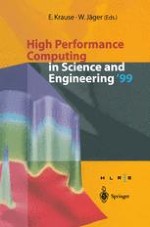2000 | Buch
High Performance Computing in Science and Engineering ’99
Transactions of the High Performance Computing Center Stuttgart (HLRS) 1999
herausgegeben von: Egon Krause, Willi Jäger
Verlag: Springer Berlin Heidelberg
Enthalten in: Professional Book Archive
